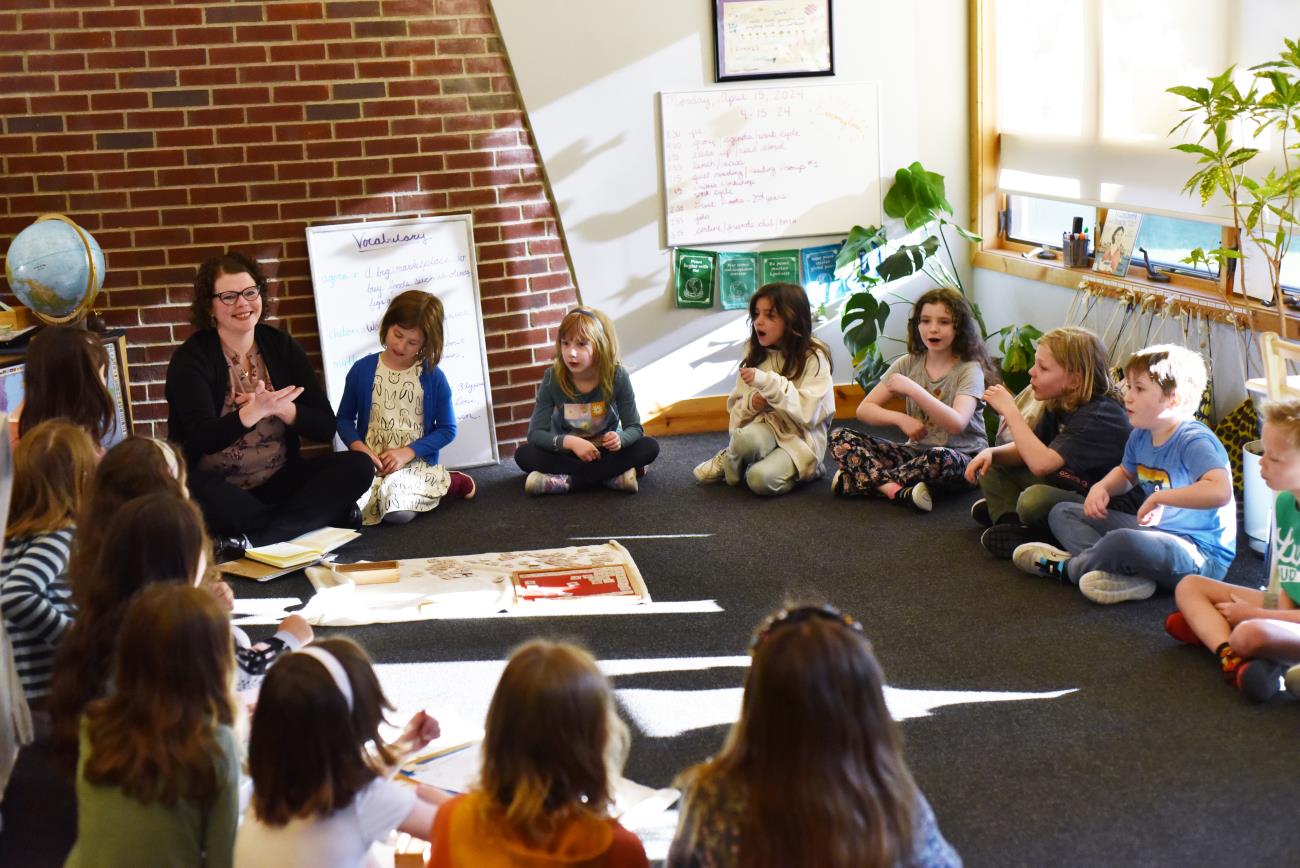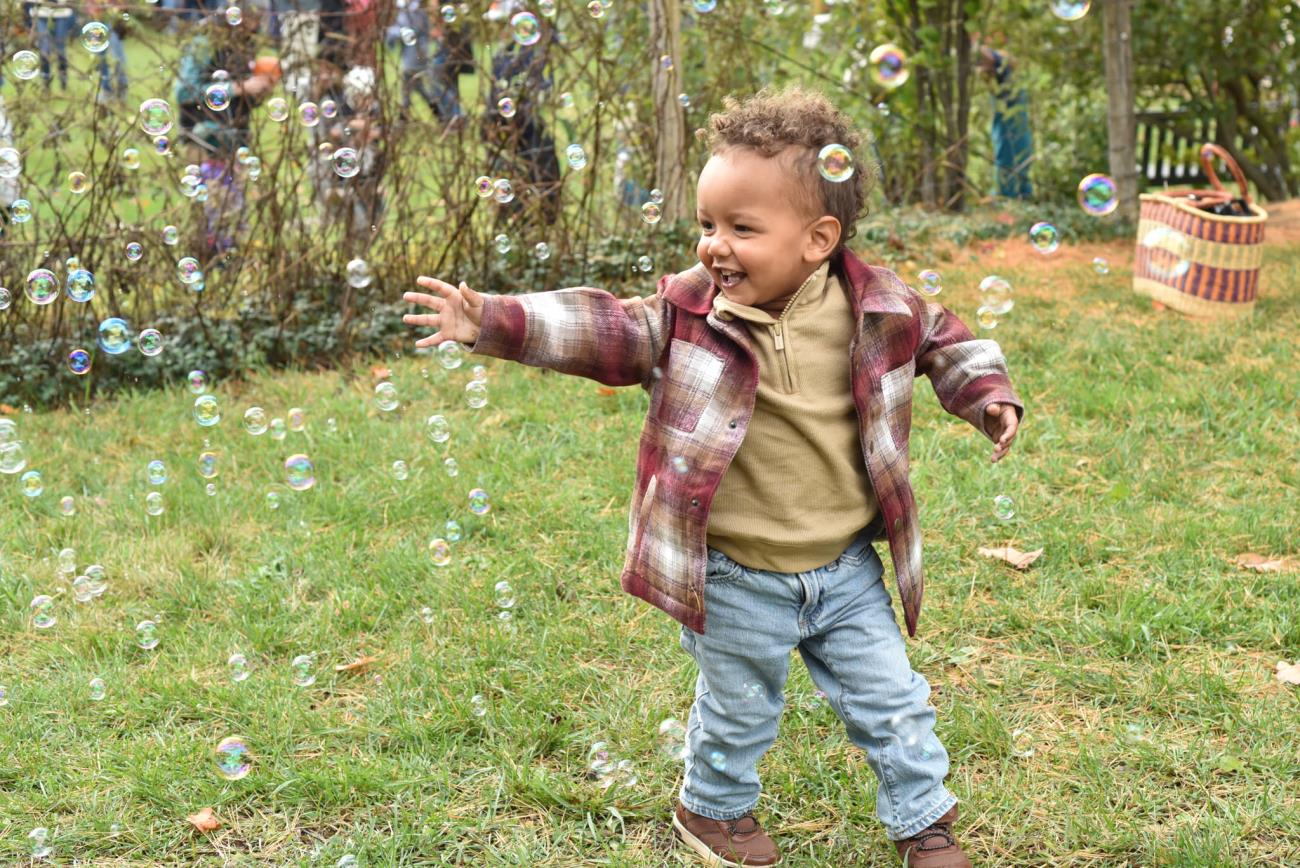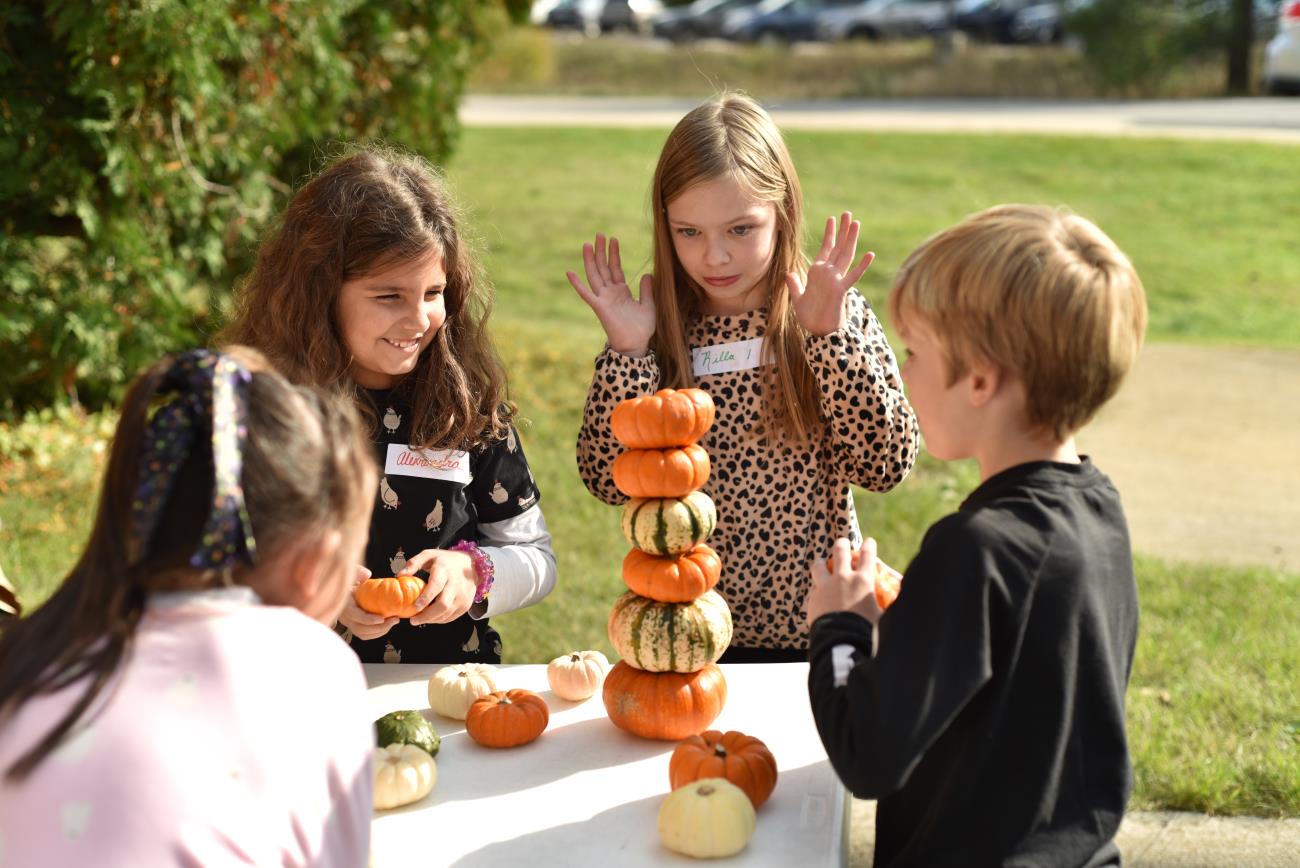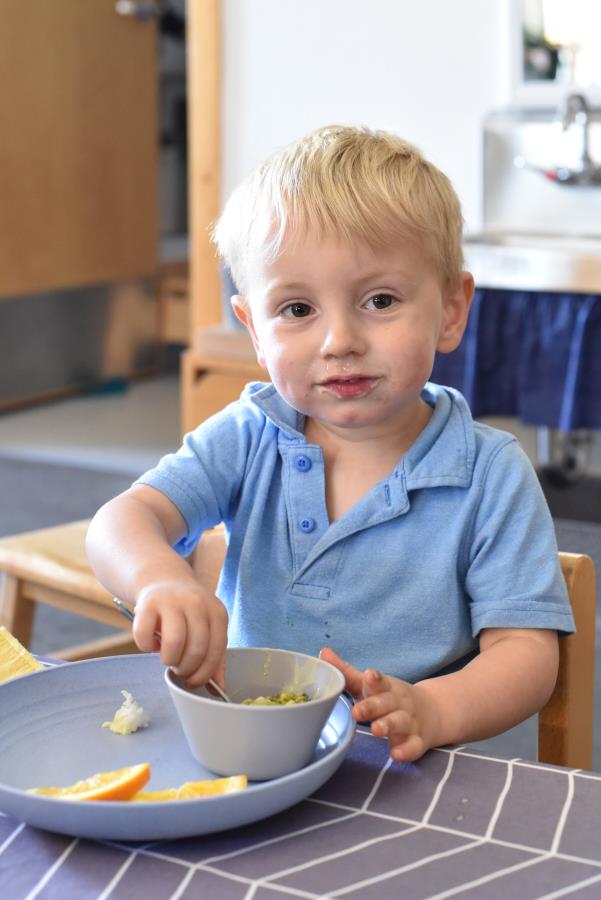Every step of my journey to becoming a guide has felt fortuitous, and I attribute much of this to the unwavering support of my colleagues, family, and friends. Their efforts, going above and beyond, have made my training and my first year in the classroom a genuinely enriching experience.
I began my work here as a substitute across every age group, which solidified for me that elementary was where my heart belonged. I served in an assistant role for two years while going through training, which offered incredible insight into my future practice. I entered my new classroom community with an experienced assistant who provided support, graciousness, and a sense of adventure. I inherited a group of positive parents who have made serving their children daily a joy. Finally, I entered a classroom filled with eager, smiling, giggly, happy, fun students who made every moment (even the hard ones) worth every ounce of effort. It truly takes a village of people to make the journey possible and worthwhile.
But what are my takeaways?
Be friendly with error! One of the most valuable lessons I've learned is to embrace mistakes, not just in the classroom but with the learners and myself. This lesson, repeatedly stressed by my trainer, has been a guiding principle in my practice. Mistakes lead to the most significant learning.
Trust in the 3-year cycle! If I trust in the beauty of the Montessori 3-year cycle, there is time to absorb, synthesize, practice, and master.
Observation is key! Honing this skill takes practice, time, and thoughtful reflection. Observation led Montessori to design, redesign, change, adapt, and perfect each material and lesson. Observation is vital to knowing the child. Observation is a critical component of any Montessori classroom, and it takes effort to be consistent.
Hold tight to what I learned in training! What is Montessori pedagogy? Why did Dr. Montessori do things the way she did? She invested decades of her life in the observation of children. She transferred that observation into concrete materials and a learning method that guides children to become their authentic selves. I can trust in that science.
One of the most rewarding lessons I've learned is that the joy and enthusiasm I bring to the classroom mirrors the pleasure the children experience in their learning. I feel a deep sense of fulfillment and gratitude as I enter the classroom daily, realizing how fortunate I am to be in this role.
As the 40th school year of The Children’s House comes to a close, we prepare to participate in some of the time-tested, community-building, heart-warming traditions that make our school what it is to the children, the families, and those who work in this community of learners. These traditions and others throughout the year enrich all of our lives and create the culture that binds us together from the youngest child in Nido to the graduating 8th year. Sharing our traditions with those who are new to our community helps them obtain a deeper understanding of what matters to us and hopefully connects them to our community on a deeper level.
Traditions exist and are developed in each classroom to build community within these smaller groups of learners; however, the traditions that are practiced on a school-wide basis are the connecting fibers that link each classroom community to the whole which is The Children’s House and Compass Junior High.
The school year opens with the Fall Festival, in preparation for which elementary and junior high learners work with our amazing kitchen staff to welcome the entire school community to a day of celebration. We gather in the Barn and partake in a delicious meal made from the local harvest and then head outside to play games and participate in arts and crafts. Family members can volunteer to help set up, clean up, or support an activity. In starting our year together this way and celebrating the abundance of our harvest and the joy of being together, we begin the year knowing that we are all part of something bigger that aims to support our learners in the most loving, kind, and thoughtful way.
As the year progresses, the children participate in activities within their classrooms in ways that are meaningful for their developmental stage. Lower Elementary celebrates Pumpkin Fun Day (which falls on Halloween) but other classrooms recognize this time of year too, in ways that make sense for them. Elementary also celebrates the 100th Day of School, Primary has an annual pajama day, and Valentine’s Day is celebrated as well. (Classroom Highlights and Waypoints are great ways to know what’s coming your children’s way!)
Before we gather for our Harvest Feast in late November, our school plants daffodil bulbs on Daffodil Day in memory of Anna Maas, Sierra Fetterolf, and Rowan Sanford. Later that month, Elementary and Junior High students gather in the Barn for a meal inspired by the story Stone Soup, while all the other classrooms feast potluck-style. Less than a month later we gather as a whole school once again for the Seasonal Sing before we leave each other for winter break.
Celebrations abound at the end of the school year. They bring us together to sing on May Day, sing and share our community on Grandparents and Special Friends Day, and, finally, acknowledge the wonder and majesty of it all on our last day of school Dance of the Cosmos. This year we will establish a new tradition, Nadine’s Day, in honor of Nadine Elmgren and the years of love, inspiration, and commitment she brought to The Children’s House. You’ll find us outside on this day, playing, picnicking, and beautifying our campus: the place where all the people who make these traditions meaningful come to gather. See you again soon!
If you have spent any time with small children, you have likely experienced a not-so-pleasant mealtime. Perhaps your child refused to eat, threw food, or completely melted down at the table. Mealtimes can be stressful and overwhelming. While I don’t expect this blog post to eliminate power struggles at the table, I do think there are a few things to implement that can support your child’s relationship with food and improve your family’s experience around mealtimes.
For starters, less is more. Children are often overwhelmed by large portions of food. When plating your child's meal, start with just a few items. A single carrot, a small scoop of pasta, and a few berries can go a long way. With these smaller quantities, your child is more likely to finish a part or all of the meal and ask for more. Not only does this method help with overwhelm, but it also sets your child up for success.
Try to include something in each meal that you know your child likes. They don’t have to like all of the parts, but at least one item should be “safe” and appealing to them. They might start by eating this familiar food and then branch out to the other items on their plate.
Eat with your child; as with anything, children love to imitate the adults around them. If you are eating the same food, they are much more likely to give it a try. It is also important to eat at the same place as your child – whether you sit at a low table with child-sized seating, or bring your child up to an adult-sized table with a Tripp Trapp Chair or something similar.
Avoid attaching morality to food. Food serves many different purposes; a source of energy, comfort, celebration, and a reason to gather. While not all food supplies the same amount or kind of nutrition, all food has value. For this reason, avoid labeling things as “good” and “bad”. This does not mean that you should not provide a well-rounded diet for your child, but you should abstain from creating feelings of shame or guilt around food/eating. Remember, your child has a much stronger sense of intuition than you and me. As adults, we have been swayed by judgments and messages in our environment. It is our job to protect the pure, intrinsic drive of the child while providing them with a variety of flavors and experiences.
Involve your child in the before and after parts of mealtime. With proper child-sized and child-safe tools, they can help chop, stir, peel, etc. Your child can also help set the table, clear the table, and wash dishes. This involvement will help your child feel like a valued member of the family and will increase the likelihood of them being excited about the meal. Having a routine before and after eating also helps your child know what to expect, and young children thrive off of predictability.
Gathering around food is such a universal experience. So much beauty can come from these moments together: the start of a conversation, the shared enjoyment of a flavorful bite. These good feelings around food and eating start from the day your child is born – beginning with the eye contact and comfort they experience when being breast/bottle fed. Take the time to connect during these moments and enjoy the abundance that food can bring to you and your child.









